What’s Next for the Landmarked House at 227 Abolitionist Place-Duffield Street?
It’s a property with deep roots in Brooklyn’s abolitionist history, but the future of the house at 227 Abolitionist Place-Duffield Street is far from assured.

The house at 227 Abolitionist Place in May 2022. Photo by Susan De Vries
It’s a property with deep ties to Brooklyn’s abolitionist history and enough historical significance to have recently been landmarked and purchased by the city, but the future of the house at 227 Abolitionist Place-Duffield Street is far from assured.
The 19th century brick house, which was home to abolitionists Harriet and Thomas Truesdell from 1851 to 1863 and is thought to have been a stop on the Underground Railroad, has been sitting empty and exposed to the elements since it was purchased by the city in 2021 — and little is known about what will happen next.
The uncertain future of the house is no new feature of its story: It was saved from eminent domain in 2007, unlike its neighbors at 223 and 225 Duffield Street, which were leveled for the Downtown Brooklyn plan. The house was again slated for demolition in 2019, but found its rescuers in a group of impassioned locals and then-Mayor Bill de Blasio, who secured its landmarking at the last minute.
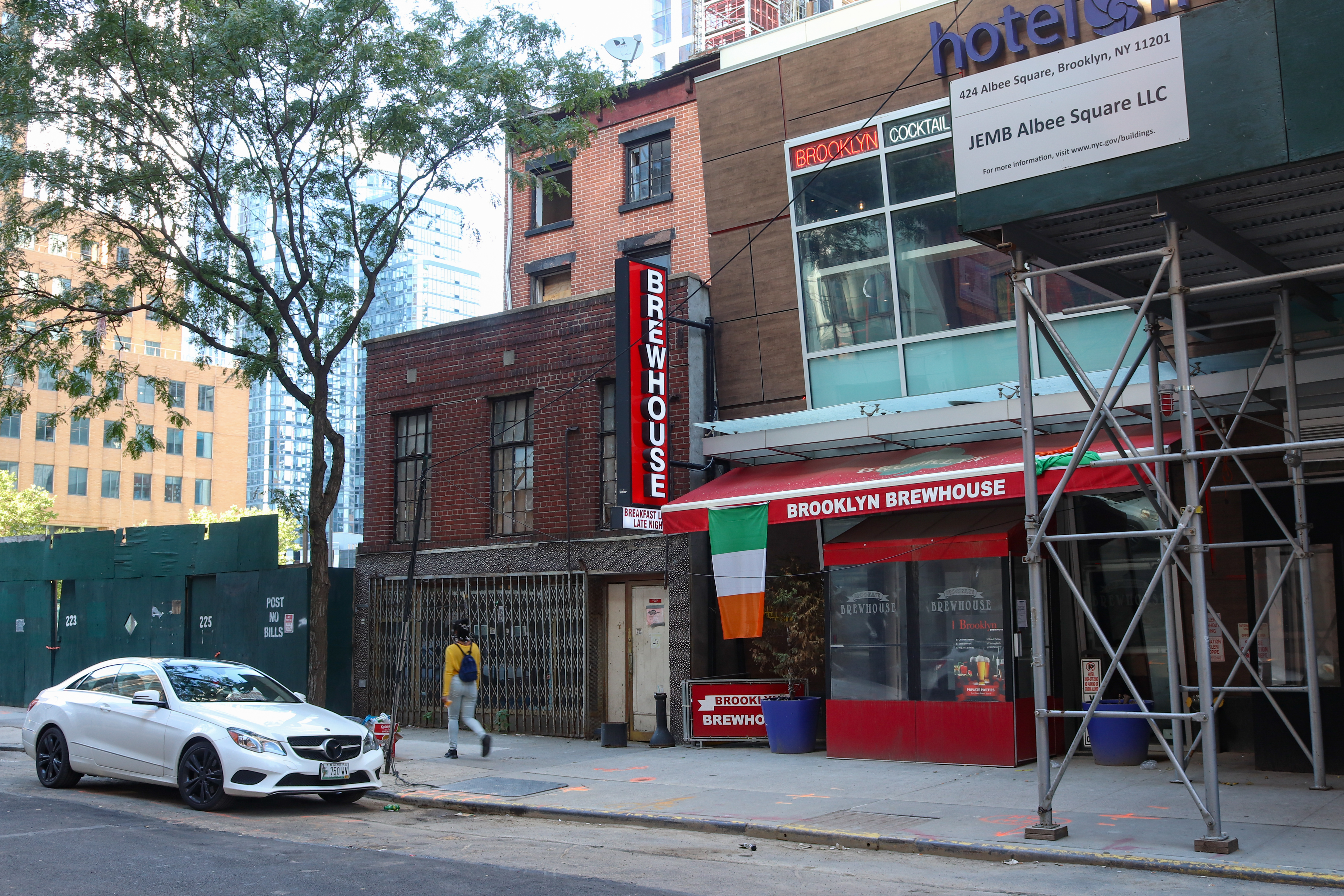
The exterior of the building in July 2020
The same group has maintained pressure on the city to convert the space into a heritage center, something it called for when the property was landmarked (and for which de Blasio signaled some support). But with a new administration and more than a year gone by, the city seems to have all but stopped in its tracks. So what could the future hold for the house at 227 Abolitionist Place-Duffield Street?
At this stage, the threat of demolition still lingers: Despite the building being officially landmarked, the city — unlike regular citizens in Brooklyn and beyond — is only required to take landmark demolition laws as advisory, not binding.
Landmarks Preservation Commission spokesperson Zodet Negron said landmarks law recognizes that city property is subject to other statutory mandates, “which is why the Commission’s review of work on them can be either advisory or binding depending on the type of work proposed and type of landmark. LPC is advisory with respect to demolition of city property.”
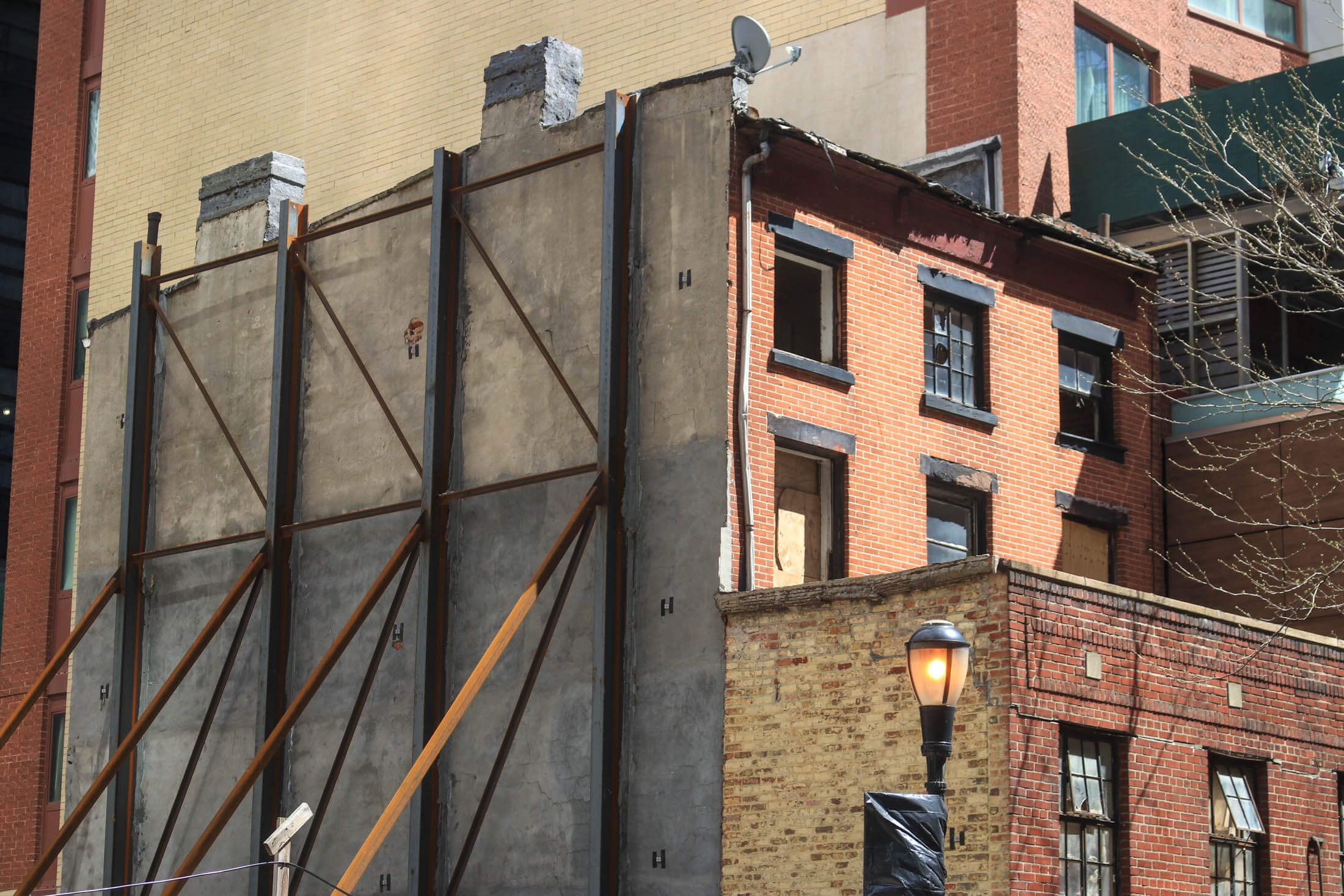
However, NYC Department of Design and Construction, which is overseeing the renovation of the house, says although the building is in disrepair, the agency is currently in the process of stabilizing it. Once the building has been stabilized, DDC says the city will work with the community to develop a long-term vision for the space. “There will be an engagement process to receive the community’s input before any project goes forward,” DDC’s Ian Michaels said. However, the department was unable to give a timeframe for the stabilization or engagement, or clarify which agency would be responsible for that outreach and planning.
Meanwhile, those who rallied to protect the building, and went on to form nonprofit group Friends of Abolitionist Place to continue advocating for the area, said restoring the building and preserving the house’s historic legacy must be prioritized. The group said there are immediate and extreme concerns about the state of the house, namely its rear wall, which has partially collapsed and has not yet been repaired or even covered.
“The home has suffered prolonged exposure to the elements and there is extensive water damage coming in through the roof and traveling through the home and down to the cellar. The lack of urgency tells us that this work unfortunately is not a top priority for the city,” Shawné Lee told Brownstoner, on behalf of FAB. The mayor’s office and the Department of Citywide Administrative Services both referred Brownstoner back to DDC when questioned about the house.
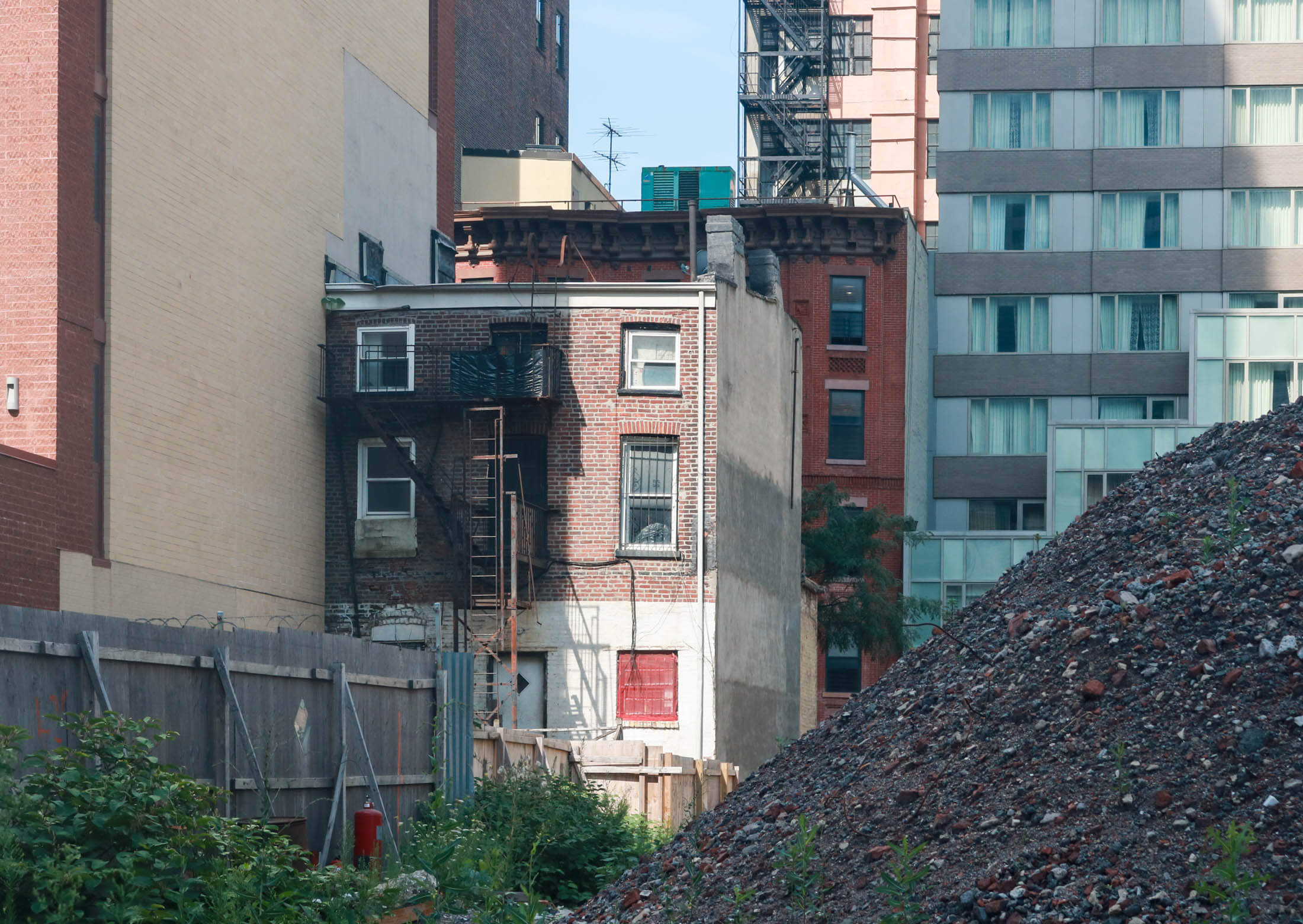
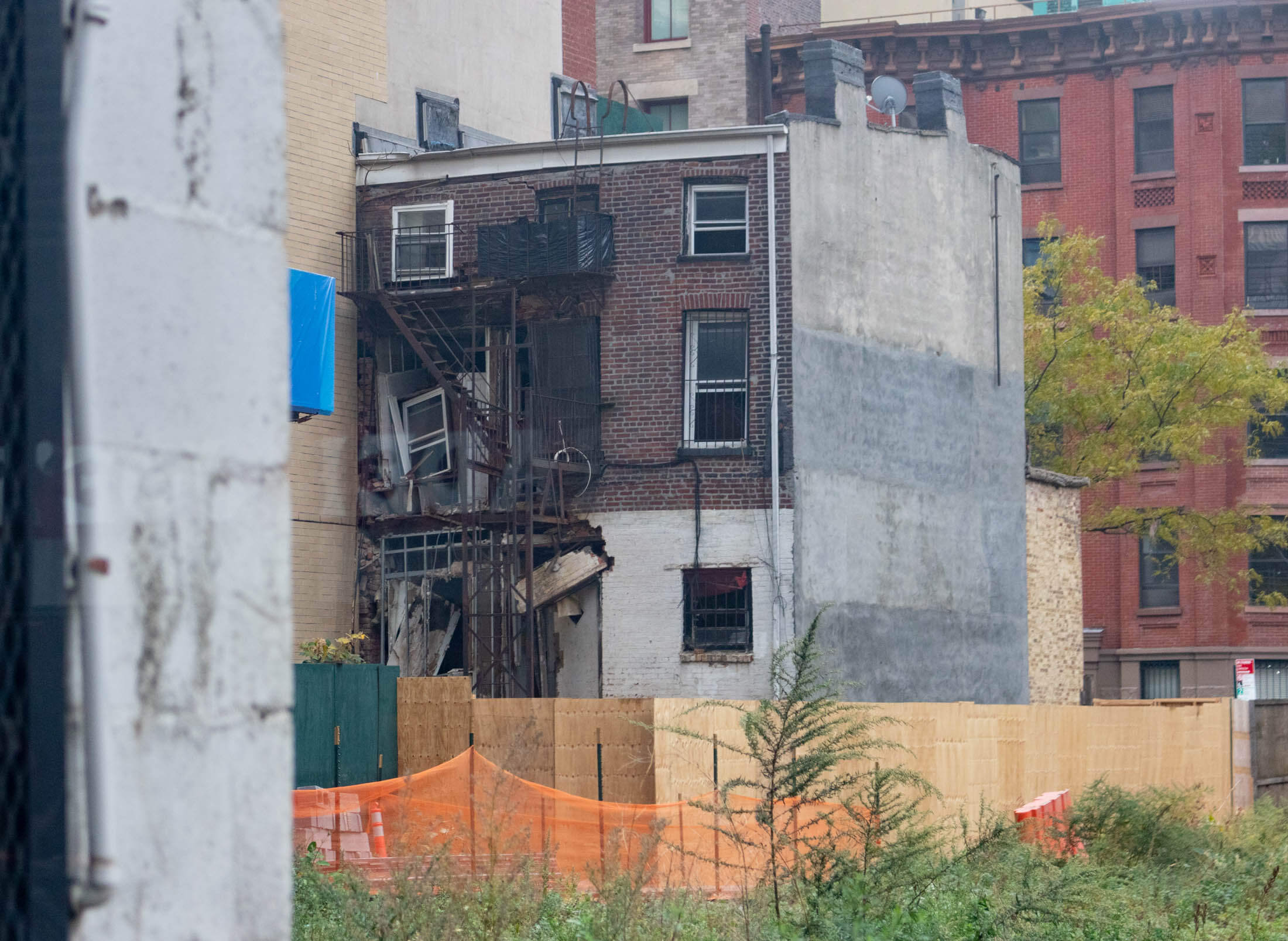
Assembly Member Jo Anne Simon, who represents the district and was involved in the house’s landmarking, echoed FAB’s concerns, telling Brownstoner that no one wants to see a demolition by neglect.
“We are grateful that the city did landmark and take this property over, but what we need to see is much more transparency, we need them to step up communications about they are doing to preserve this property,” Simon said. She added that no one knows what the city’s plans are, and because of that, there is a great deal of confusion around what it is doing and not doing.
“We need to keep that building standing, keep it safe and not rotting. The city is obligated to make sure that is the case, but we haven’t been able to get that assurance,” she said.
The community overwhelming supports restoring the property and turning into a heritage space, she continued. “It needs to be a process that includes people that are really here to preserve that history, there are descendants of people who were enslaved, they should be at the forefront.”
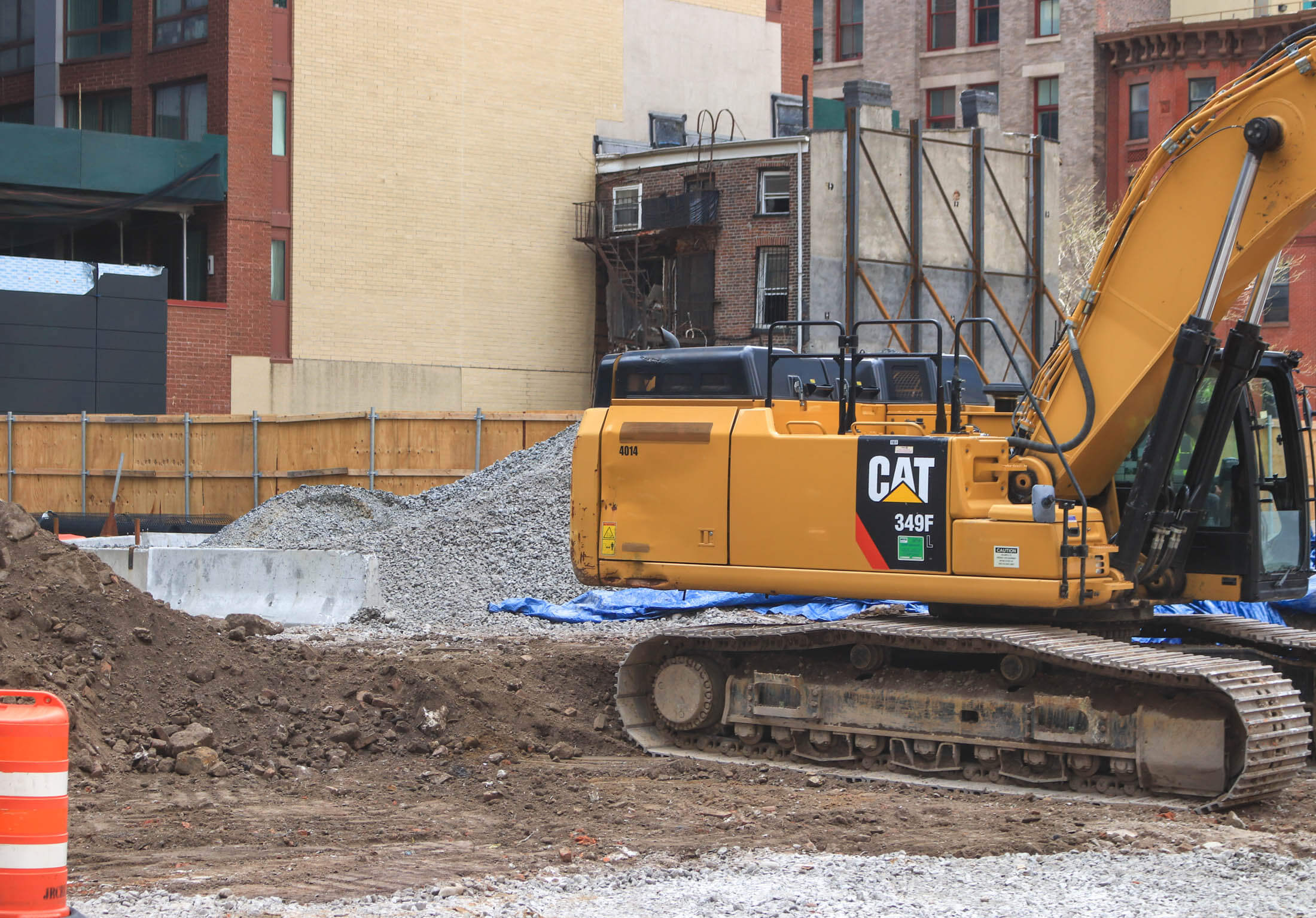
Lee, who is the daughter of the house’s former owner, Mama Joy Chatel, is on the board of FAB, which wants to run the heritage center once the building has been restored.
The group says it has support from a range of organizations, including Weeksville Heritage Center, the Meyer Residence, the North Country Underground Railroad Historical Association, Monumental Women, the Cultural Museum of African Art, Flatbush African Burial Ground Coalition, BK NAACP, the Colored Convention Project, the families of Ida B. Wells, Sarah Smith Garnett/Dr. Susan Smith McKinney, Maritcha Lyons and more.
It plans to work with those supporters, as well as the Downtown Brooklyn Partnership, to provide programming that includes permanent and temporary exhibitions focused on the history of abolition and the Underground Railroad; a cultural hub for the city and country’s abolitionist history; seasonal exhibitions; a dedicated community space; and resources for local activism and organizing.
“Our work at the Abolition Heritage Center will also make it a priority to inquire, educate and engage the public on the residual impacts of multigenerational trauma experienced by descendants of enslaved Africans — particularly those living in New York City,” Lee said. “We believe it is time for the city to reckon with the fact that New York was a slave state and that the patterns of harm, disregard and disrespect continue to this day expressed through gentrification, systemic barriers to generational wealth building, displacement and other forms of oppression.”
The group is not only fighting to secure the future of the house, but to ensure all of Abolitionist Place is developed in a way that honors and celebrates its rich history and those who continue to fight for it, Lee said. Those in FAB see an opportunity to create a wider commemorative space by linking the house to the planned park on Abolitionist Place. They are also pushing city agencies to include a monument of five women abolitionists, the Sisters in Freedom, in the park.
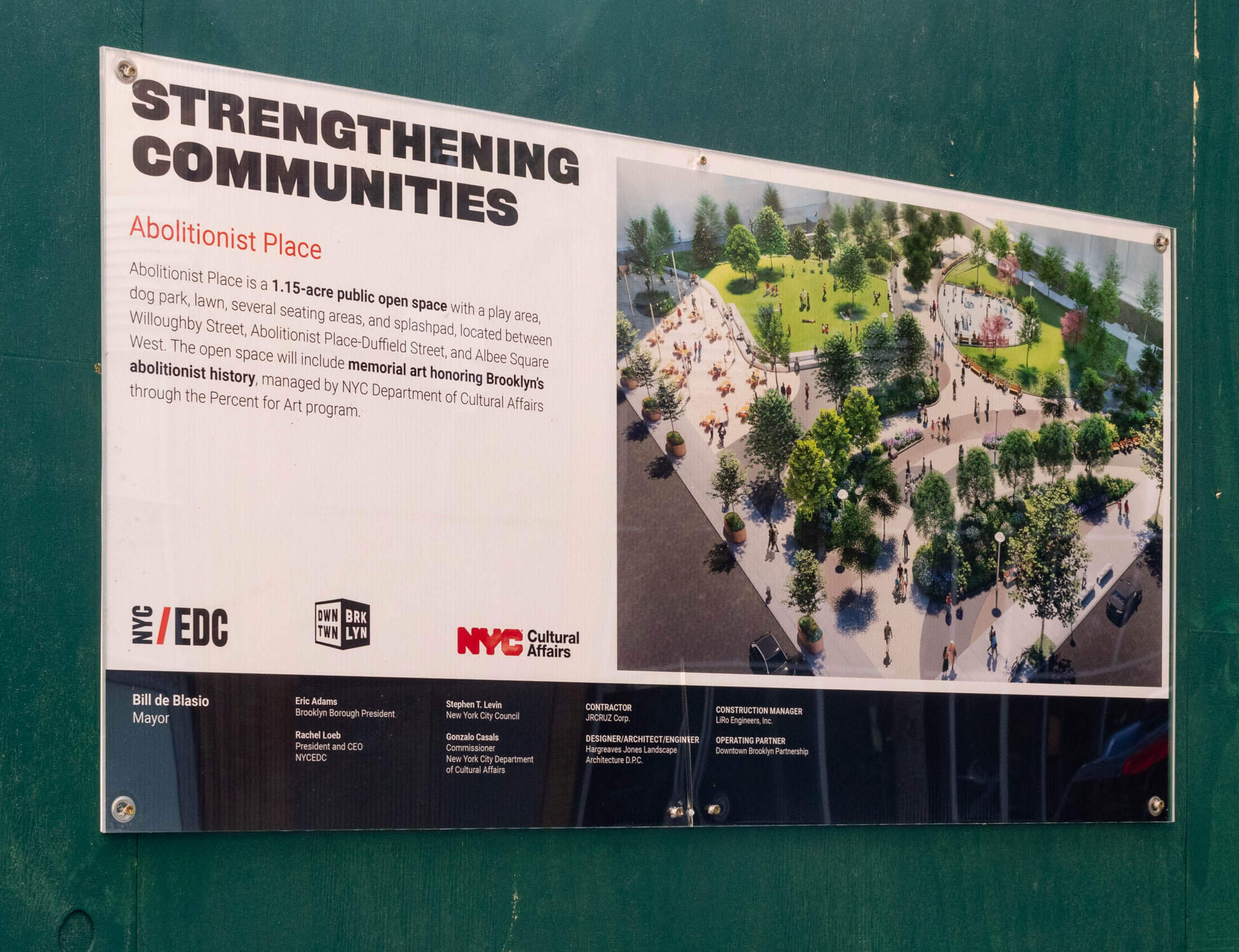
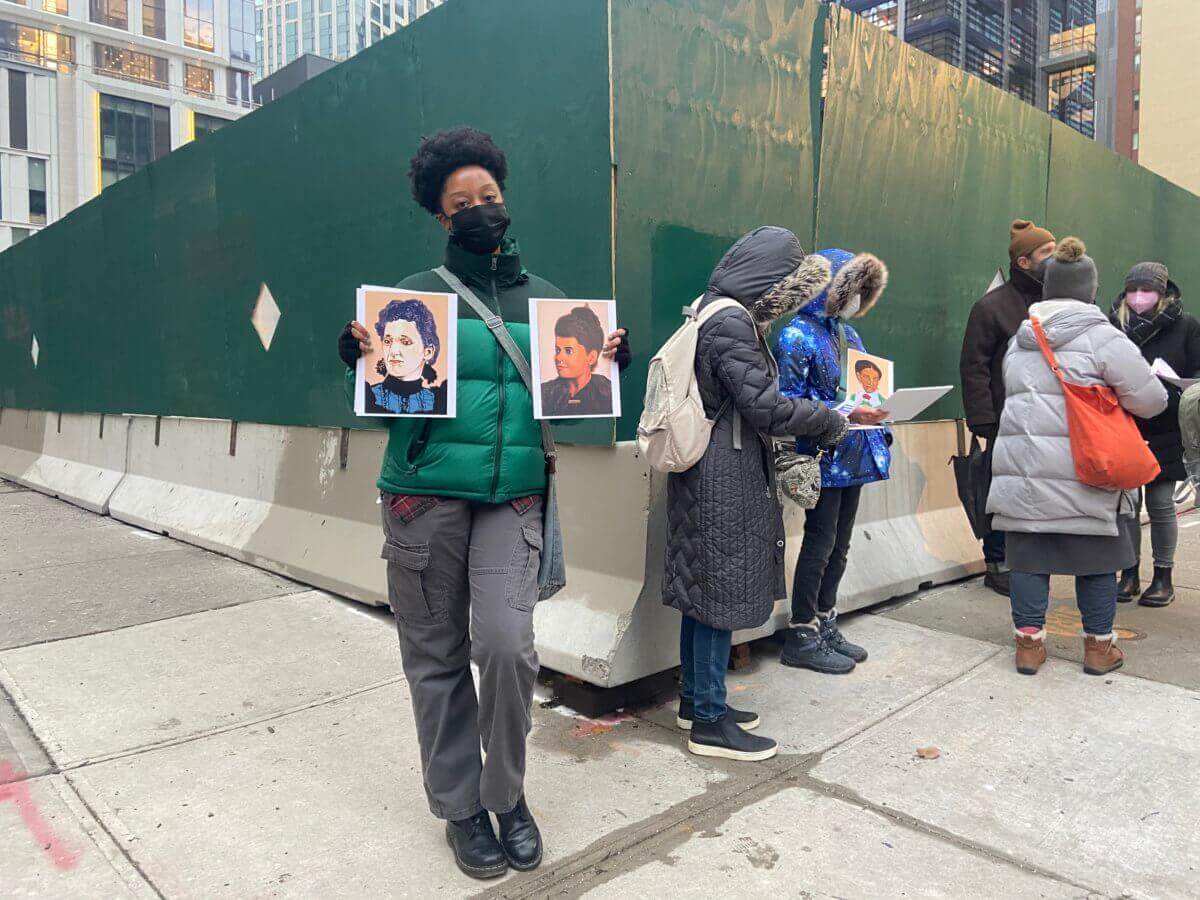
“We feel strongly that the development of the Abolition Heritage Center and Abolitionist Place Park will be revenue generators as a cultural destination that has been devastated by the overreach of gentrification and offers a rare opportunity in which the community interest and the commercial interest intersect,” Lee said.
If the city does commit to renovating and restoring the house at 227 Abolitionist Place and handing it over to FAB, the organization will likely have a big job on its hands. But it is one it says it can handle, citing its organizing and fundraising efforts so far, which includes a Go Fund Me campaign supporting the heritage center.
If it succeeds, it will not be the first local grassroots effort to form a heritage center celebrating the borough’s abolitionist past. Weeksville Heritage Center was founded by Brooklyn artist Joan Maynard in 1968, and is now a museum and educational center preserving, documenting and inspiring engagement with the history of the free Black community at Weeksville.
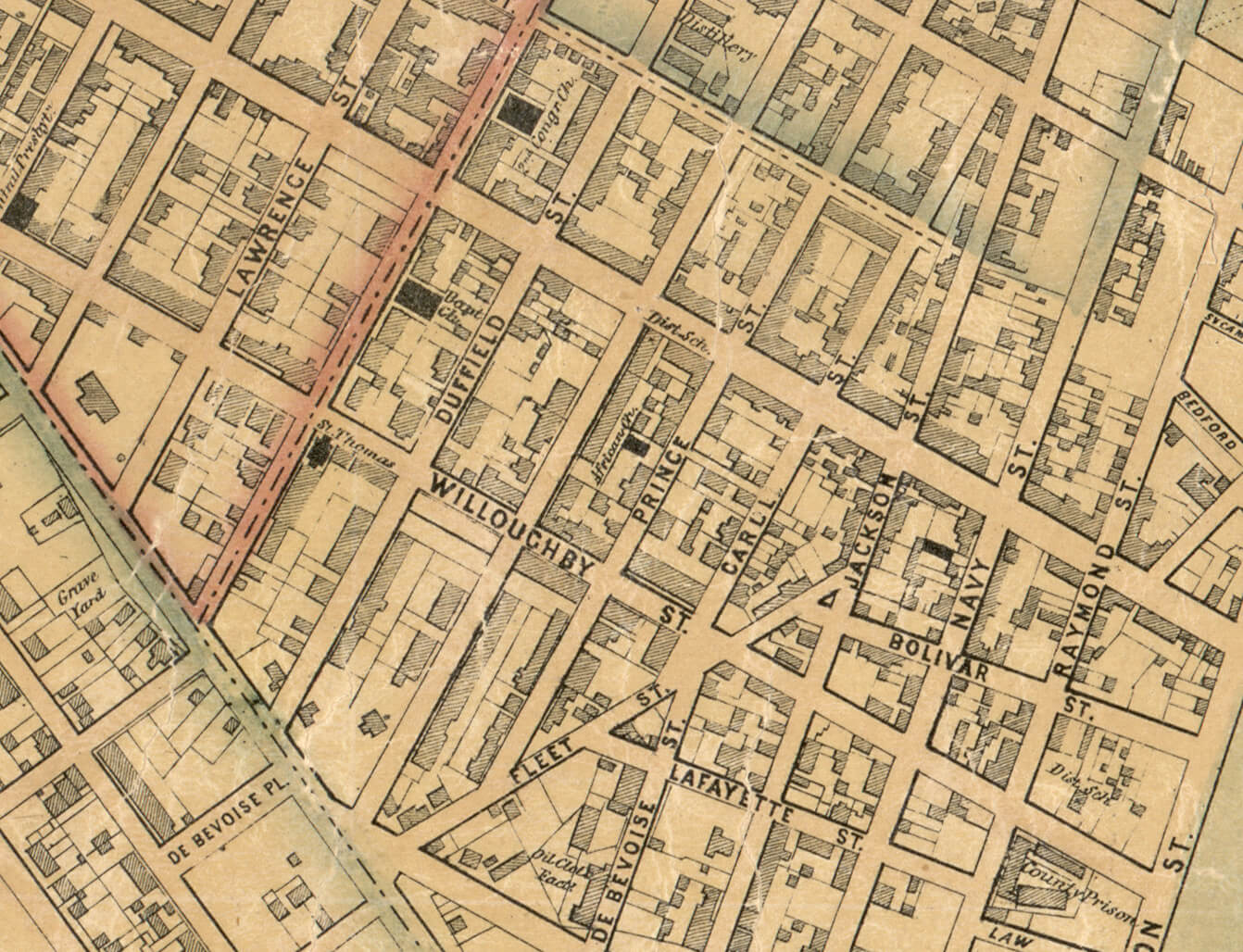
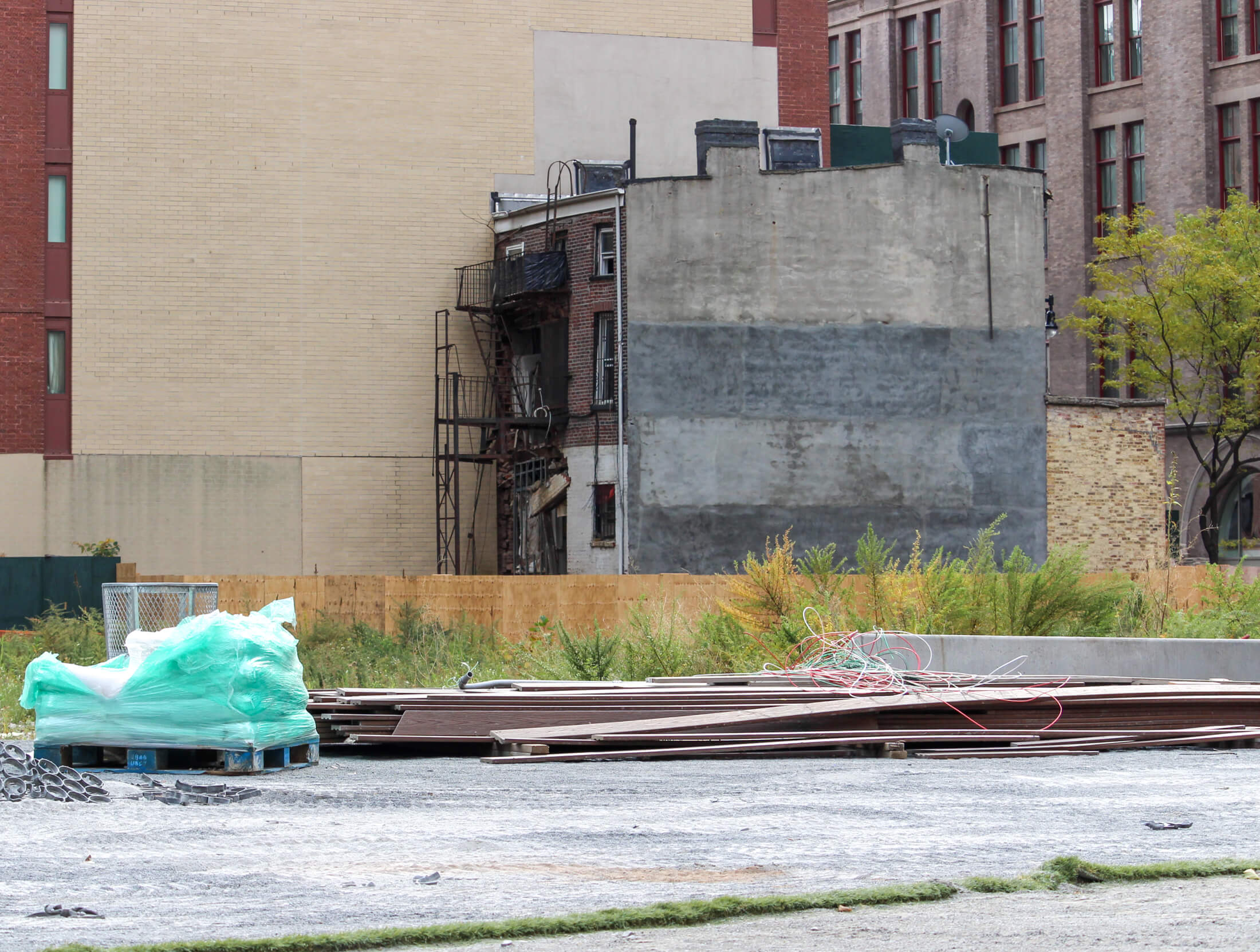
The project also has the tentative backing of local politicians, including Assembly Member Simon who said FAB had fought a long battle to ensure the survival of the house, and had shown “a knowledge, commitment, passion and competency.”
Council Member Lincoln Restler told Brownstoner that he had “the privilege and good fortune” of knowing Mama Joy and being taken into the sub basement of 227 Abolitionist Place. “It is a site of eminent cultural consequence, and the broader Downtown Brooklyn, Brooklyn Heights, Fort Greene area was pivotal in the fight for abolition,” Restler said.
“I am thrilled we have preserved this building and I’m committed to doing what I can to ensure it is a site where we commemorate the activism and history of the Underground Railroad and abolitionist efforts across the building. I think a museum is a meritorious idea and one I’m certainly encouraged by, and interested to hear from city agencies precisely what they’re envisioning.”
He said he thinks it will cost “a pretty penny” to stabilize and restore the building, and convert it to a place of learning and memorialization, but said: “I’ll do everything I can to help make it possible.”
FAB is urging more local leaders to get on board with the vision for the area and increase the pressure on the city.
“We have a once in a lifetime opportunity to create and uplift a physical heritage center that honors Brooklyn’s unique contribution to abolitionist history, while simultaneously honoring the movements for Black liberation, racial justice, unity and healing that continues today,” Lee said.
[Photos by Susan De Vries unless noted otherwise]
Related Stories
- After Abolitionist Landmark Win, Activists Fight to Create Brooklyn Civil Rights Destination
- Amid Controversy, Artist Starts Public Process for Art at Downtown Brooklyn’s Abolitionist Place Park
- Activists Protest Plans for a Dog Run Next to Abolitionist Home in Downtown Brooklyn
Email tips@brownstoner.com with further comments, questions or tips. Follow Brownstoner on Twitter and Instagram, and like us on Facebook.

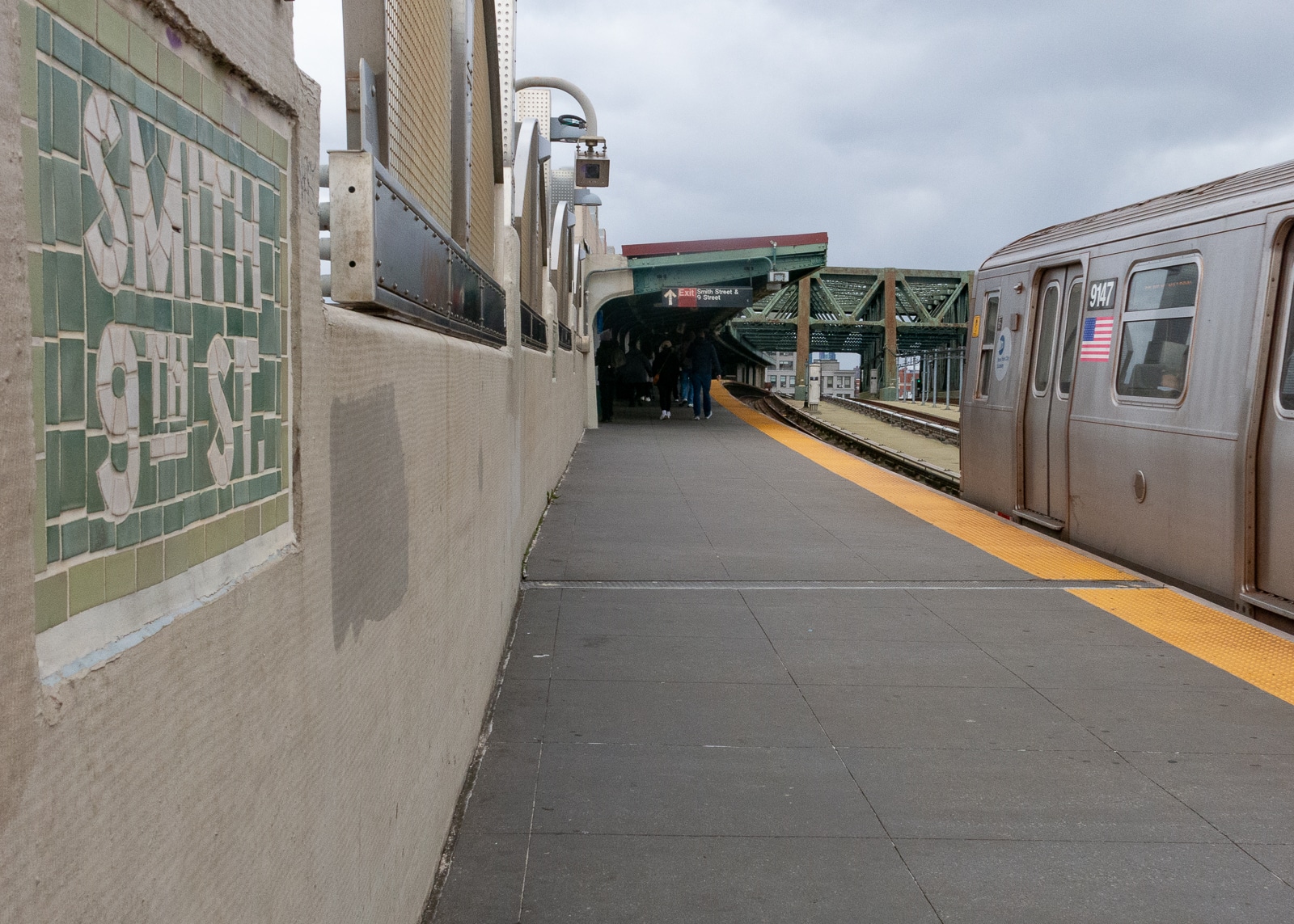
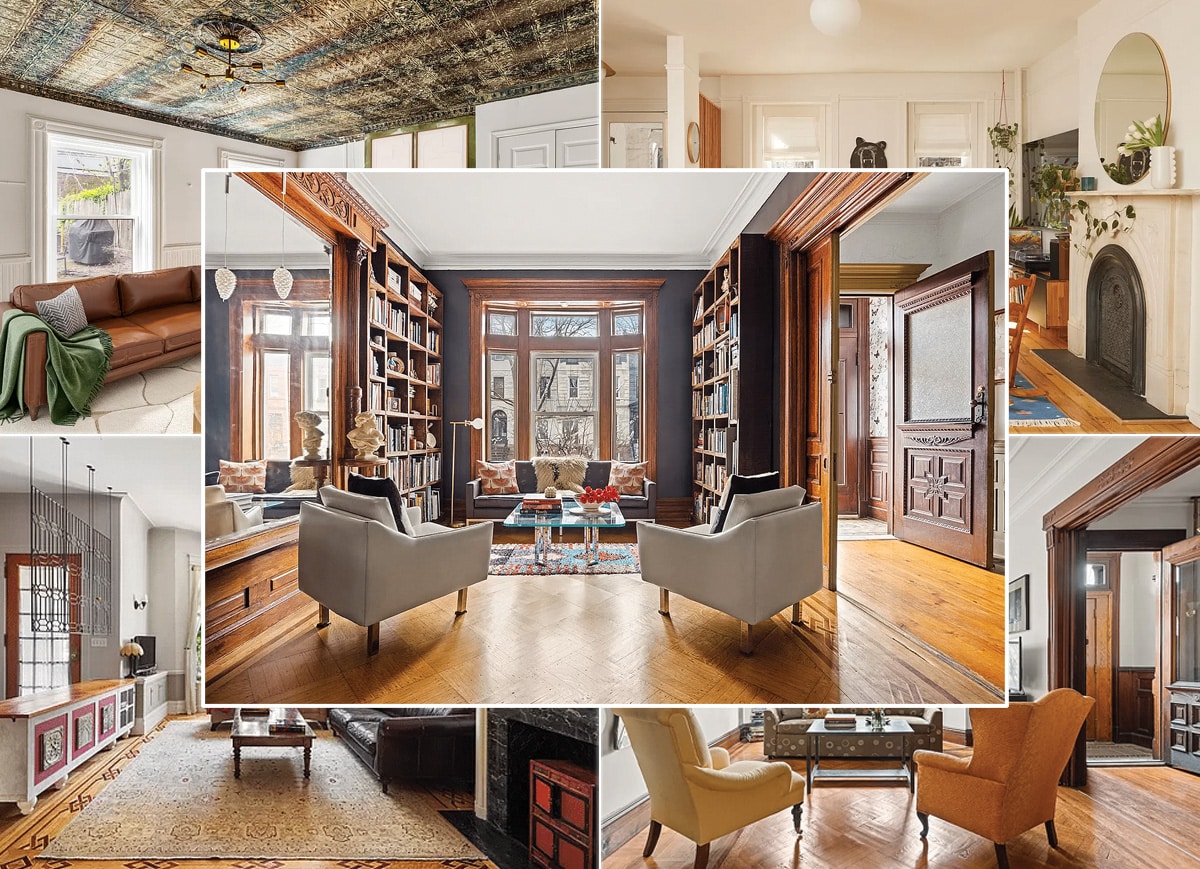
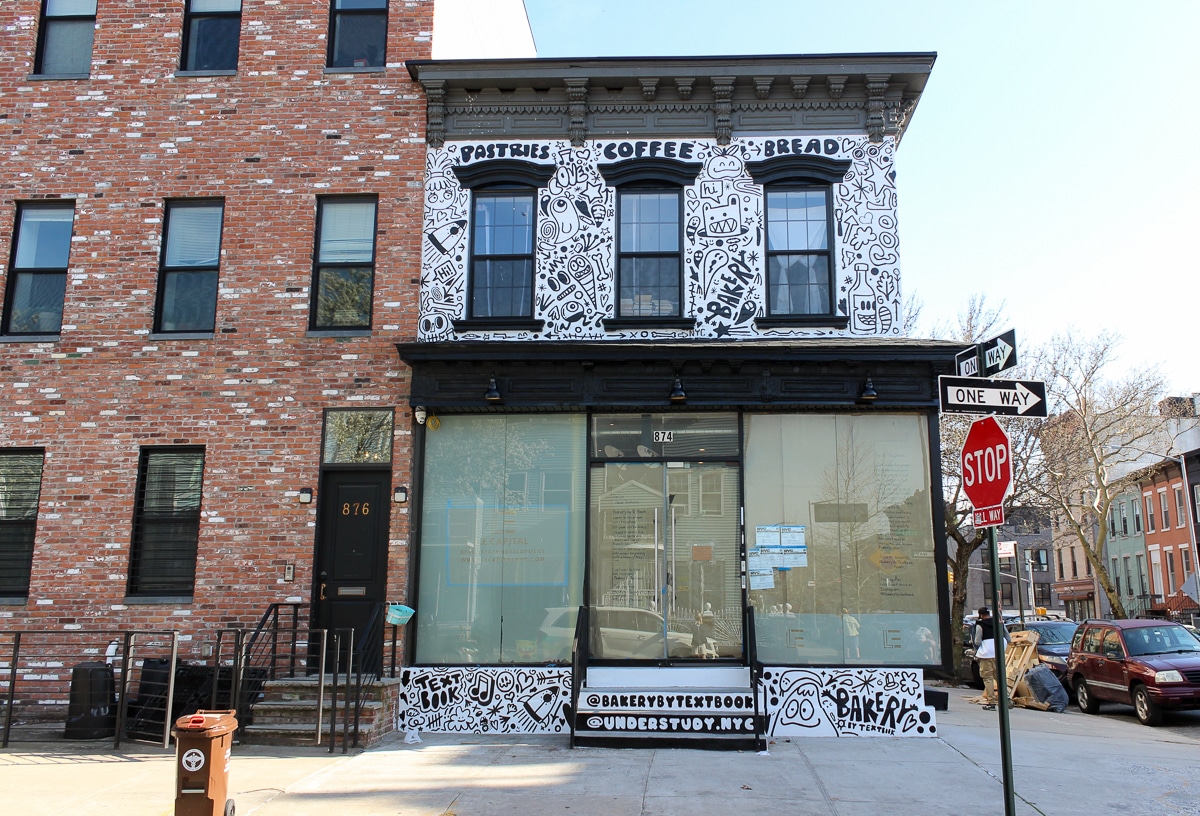





What's Your Take? Leave a Comment